-
Posts
14,343 -
Joined
-
Last visited
-
Days Won
25
Content Type
Profiles
Forums
Blogs
Gallery
Events
Store
Posts posted by Ed_Haynes
-
-
Nice! The history is intact.
 Once removed, it'd be gone forever.
Once removed, it'd be gone forever.And to think some collectors would like this to be all shiny and sparkly!!

 0
0 -
Indeed... a "wearer`s copy" is carte blanche for a lead sinker maker ....
I thought that when eBay admitted to "wearer's copy" that translated as "100% fake"?
 0
0 -
Much as believe in the value of "the records" -- more, I think, than most -- I'm not sure how much the familiar records will help us here. We'll be able to get, as we have in print (right?), a list of people who were awarded, let's say, the ORB 7 times. I am choosing my words carefully: they were given the award that number of times, these records can't tell us what their badge looked like, that is not the function of the commonly-consulted records. To determine what was ACTUALLY awarded, it will require close examination of photographs or, better yet, of the groups themselves. When we see a photo like that of Kozhedub which Christian put before us, we then have the other side of the evidence: what the awardee's insignia actually looked like.
To answer the question from the records will require looking at records of the mint, to see what badge(s) they actually struck. (And this gets us back to Christian's earlier query as to how the mint actually functioned.) But one thing is clear, all governments keep records of one thing in particular: how they spend their money. Whether capitalist or socialist, spending money by the State always generates a paper trail and these awards cost money to produce (though, should we ever find the records, we may well be shocked at how little they cost). Striking ORBs with the numbers "7", "8", or "69" at the mint would have required modest retooling and this would have left even more of a paper trail. All the records that folks like us commonly see are military (reflecting our pro-military bias) and the few records of civilian awards are still exotic to folks like us; what we haven't seen are any records or research from the mint side. I don't pretend to know how Soviet-era archives are organised, of if they are even organised, but this seems like the research agenda that will be needed.
Until then, we have lists of recipients and may be able to assemble photographic evidence of the awards in wear?
0 -
I just had to steal your picture Ed, I hope you don't mind.
I think that the little red and white badge on the right side of this picture is an "outstanding worker of the people's education" badge.(R 01-R 06)
Which variation will no doubt remain a mystery but I'm pretty confident of the ID, any thoughts?
Yes!! Agreed. They aren't my pictures, from Mongolian TV after all.
Read the translation - seems "interesting" for the rock treatment of these sentiments!
I think "Mr. Jewelery" is the chap behind the apparently GREAT rock opera (yes!) on Chengiz Khan (yes yes!!). Wasn't able to get tickets when I was in UB. Sold out.
 0
0 -
For those who want to sing along:
See: http://www.linguamongolia.co.uk/page71.html
The current national anthem was written in 1950. The music was composed by Bilegiin Damdins?ren (1919-1991) and Luvsanjamts Murjorj (1915-1996) and the words were written by Tsendiin Damdins?ren (1908-1986). The anthem was changed slightly in 1961 to include references to communism and the Communist Party, however the original words were restored in the early 1990's following the election of a democratic government. This anthem replaced the ?Internationale? - a communist workers song adopted following the proclamation of the Mongolian People?s Republic in 1924. Damdins?ren, a native of Dornod Aimag, was a giant of modern Mongolian literature, whose influence on modern writing is second only to that of Natsagdorj. He spent his formative years studying abroad in Leningrad (1933-38) where he became fluent in Russian, worked as a translator, and produced a diverse body of work including poetry, fiction, translation, history and literary criticism. In 1947 he published a beautiful translation of the Secret History in modern Mongolian, and was a three times winner of the prestigious ?State Prize?. He was also instrumental in the introduction of the Cyrillic script.
Rough English:
Our sacred revolutionary country
is the ancestral hearth of all Mongols
We will never yield at the foot of the enemy
and we will prosper for eternity
Forming into unified ranks
with all the honest countries of the world
let us develop our beloved Mongolia
with an iron will and all our strength
The fortunate people of brave Mongolia
have freed themselves from suffering and enjoy happiness
the pillar of delight, the key of progress
let our majestic nation live forever!
Forming into unified ranks
with all the honest countries of the world
let us develop our beloved Mongolia
with an iron will and all our strength
The site has more, including the anthem in bichig, cyrillic, and transliteration. It is a SUPER site otherwise!
0 -
Is that it? Nothing I can see on the (prominent) uniformed services.
Play with it, comrades, . . . .
0 -
Image Anthem 5
And the easy one, "Mr. Black-Sparkle-Coat", Polar Star.

 0
0 -
Image Anthem 4b
OK, better. (Ignoring cleavage!)
Title of Merit (B A8) on the right // ??? / maybe Outstanding Worker of Culture (B S 03)?

 0
0 -
Image Anthem 4a
Not much clearer. Let me save my theories, I think there is a better one.

 0
0 -
Image Anthem 4
Now she is more difficult.
Obviously a Title of Merit (B A8) on the right.
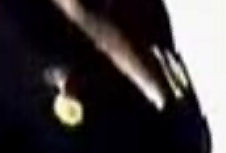
 0
0 -
Image Anthem 3
OK, easier, Title of Merit (B A8).
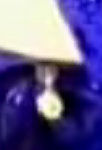
 0
0 -
Image Anthem 2c
Not much better. Maybe worse?

 0
0 -
Image Anthem 2b
On the right, not so clear.
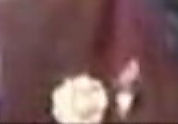
 0
0 -
Image Anthem 2a
Oh . . . .
Help . . . !!


 0
0 -
Image Anthem 2
OK, this is the boy I wanna figure out!

Sukhbaatar
Polar Star /RM Military Valor (?) / Polar Star
???
??? / ??? / Soviet Victory Over Japan
Maybe if I captured it a few seconds earlier of later . . . ???
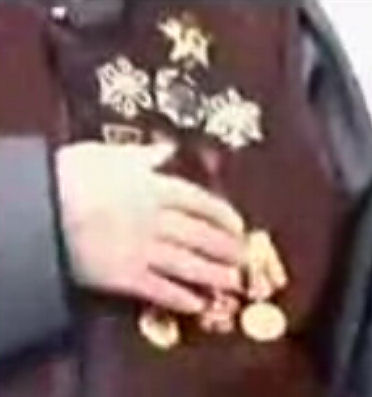
 0
0 -
Let me try some stills. The best I can get from the YOUTUBE images.
Nice to see these worn, especially by well-known rock stars (which I assume these folk to be). Not there long enough to get "into" pop music, especially in a language some of whose sounds I don't think I shall EVER be able to make, much less speak, understand, or read with facility.
Image Anthem 1
OK, let us get rid of him, jewelery only.
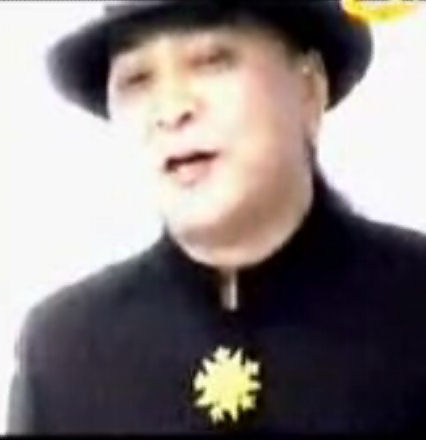
 0
0 -
OH WOW OH WOW OH WOW OH WOW!!!!!!!!!!!





Thanks!

Haven't seen this since I was in UB. Makes me want to go back (too).
0 -
OK, I finally found it, for some reason I was distracted. Would guess it is MRYL Badge (B V02).
What do I win? I already have the badge

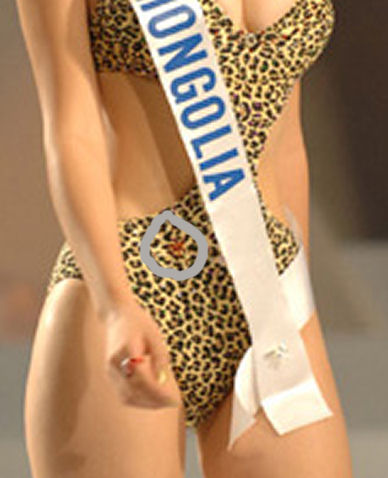
 0
0 -
Me too, and come what may. If you don't it WILL haunt you. Will see you in debtor's prison?
 0
0 -
4 foreign HSU-recipients, who really deserved their "Gold Star"
Gentlemen,
to get away from the "Honecker-Birthday-HSUs", a great example of recipients, who really deserved their Gold Stars: The fighter aces of the FRENCH "Normandie-Niemen" squadron, who was fighting within the lines of the Red Army:
- Capitaine Marcel Albert
- Capitaine Roland de La Poype
- Lieutenant Jacques Andr? (post.)
- Lieutenant Marcel Lef?vre (post.)
2005 there had been a great book published about the history of the squadron:
John D. Clarke, "French Eagles - Soviet Heroes", Sutton Publishing 2005.
Best regards
Christian Zulus
You're 100% right, Christian. The Normandie-Niemen guys deserved the HSU and more.
0 -
Sorry: Medal Year Book published annually by Token Publishers (the same folks who do Medal News), essentially a price guide with "information" appended.
0 -
I was asked why medals to natives generally sell for less compared to brit units and was it just snobbery? I think perhaps its because they are not so easy to research?
By your reference to "natives", I shall assume you mean Indians (in the pre-1947 sense). Given the sense in which the word "native" was and is used, it is a grossly inappropriate word, similar to ni**er (which was and is also used to describe Indians). Unless of course, you intend it in its generic sense, as I do when I might refer to medals to natives (of the British Isles) being more (GENERALLY) expensive that those to Indians.
Anyway, there are several issues:
1- For enlisted men in the Indian Army medals have indeed been harder to research down to the individual level. Generally speaking, personnel records have been (and are still) retained by the regiments and/or battalions. The 1922 reorganizations brough havoc to record keeping as did the three-way partition of the Indian Army in 1947. While efforts are currently underway to preserve and centralise non-current or pre-1947 records that survive, there is also the concern that the release of any of these personnel records is in violation of Indian law. For enlisted men, research as to what the battalion was doing when the man was (presumably) with them is usually the best we can do. Regimental histories, usually written (pre-1947) by natives (of the British Isles), rarely make mention that anyone other that these selfsame natives served in the regiments; generally, the same is true for the war diaries, though there is more variability here. Research on VCOs is much easier, as they are listed in the army lists and a photo can usually be located; a lot can be done with a VCO's medal. Medals to European officers are the same as any other medals to natives (of the British Isles) and outside my concern.
2- There is no one-stop-shopping for research. The relevant records are spread out among the National Archives of Britain (Kew, aka the PRO), the India Office Records (now in Thatcherised captivity at the British Library), the National Archives of India (New Delhi), the Indian Ministry of Defence Historical Section (strictly off-limits to normal humans), and the individual regiments. For regiments that went to Pakistan, no one has a clue, as many records have been lost and destroyed; the National Archives of Pakistan, while they are very nice folks, have NOTHING. Speaking of destruction, the Brits intentionally destroyed many records just before their departure in 1947 and military records were one of their special targets; when British officers weren't busy stealing the regimental silver, they were also holding bonfires of regimental records. Likewise, leaving historical records in working offices is always a bad idea, and India is no exception. Unfortunately, there is no enforced Indian law on regular and routine transfer of non-current records to the archives. This has left many valuable things in the hands of non-archivally trained bureaucrats (in or out of uniform), who see those old records as just so much junk. This, for example, led to the Indian equivalents of the British WWI MIC cards being pitched out by the MoD medal office in the late 1970s. Genealogy is not a well developed hobby in India (for better or worse) and we do need to remember that it is only the demands of genealogists (we simply don't count) that have led to the preservation of so many records relevant to our general concerns in the UK. Efforts are underway to centralise a lot of surviving Indian records in the new Center for Armed Forces Historical Research (at the USI India in New Delhi), but there's a long way to go and what's gone is gone.
3- While I am not sure that much meaningful research can be done on the Internet, less is available for Indians than for Brits.
4- There is a perception, among ethnically British collectors of "British" medals that medals to Indians (or whatever ugly word they choose) cannot be researched. This has been said over and over so many times than many have come to believe it as a matter of dogma.
5- These days, most nice medals/groups don't make it out of India, as there are several very good and very sophisticated Indian collectors there who snag them. This, combined with the breaking up of a few classic collections from the 1950s and 1960s has driven up prices of Indian medals to where they are actually selling above MYB prices.
6- Speaking of the MYB, that insidious thing is everywhere. I have been shown it by village silver dealers who didn't know English, but could see the picture and read the price in pounds and convert to rupees and ask that for any medal they had in stock. Ignoring whether MYB prices and information are fantasy, the cursed book is omnipresent.
7- There is tremendous (and intentional?) ignorance about medals to Indians. The current BB&M edition is filled with so many errors that no one quite knows where to begin, though at least they removed some of Major Gordan's jovial racism that had been carried over from the earlier editions. There are hopes that the new edition will be better. Collective discussions are underway on doing an Indo-centric parallel book that focuses on the Indian military and mentioning in an "oh, by the way" fashion that some natives (of the British Isles) tagged along on things like the Chitral expedition.
8- Important, maybe the most important, is simple racism. Because these medals are not to Europeans, to "natives" (in your original usage), they are denigrated, as non-Europeans were (and still are?) denigrated. In the 1970s, a major London-based medal firm described their small and vocally resented stock of medals to Indians as their "nig**r drawer"; they still use that term today (or at least they did last summer). Until very recently, most UK-based medal dealers and auction houses could not be bothered to stock medals to Indians, dismissing them (the medals or the men?) as "bazzar trash". A few UK dealers and one major auction house have challenged this assumption and done very well from doing so, but old attitudes die hard, and phaleristics is no exception to society at large.
As I said above, prices of medals to Indians have been rising and, in many cases, now exceed the corresponding medal to a European. Those of us who collect medals to Indians suffer from this and, at times, wish we could go back to the "bad old days" when one could but this "garbage" at kilogram prices. In those bad old days, in the mid-1970, I went into one silver dealer's shop in Rajasthan and asked if the owner had any medals. His response: "Kitne kilo chaiye?" "How many kilos do you want?" Despite what some think, those days are gone, in many ways (the same dealer now has acopy of the MYB), and one only needs to look at Phil Burman's lists or a recent DNW auction catalogue to see otherwise.
Hope this overly long note is of interest to someone.
0 -
The WWII one? BB&M or even MYB??
0 -
Though WAY out of my field, I find this a really interesting thread. Thanks, mates!
 0
0




Talk about a rare medal bar....
in Germany: Imperial: The Orders, Decorations and Medals of The Imperial German States
Posted
Me too. So . . . Rick, are you saying this is OK?